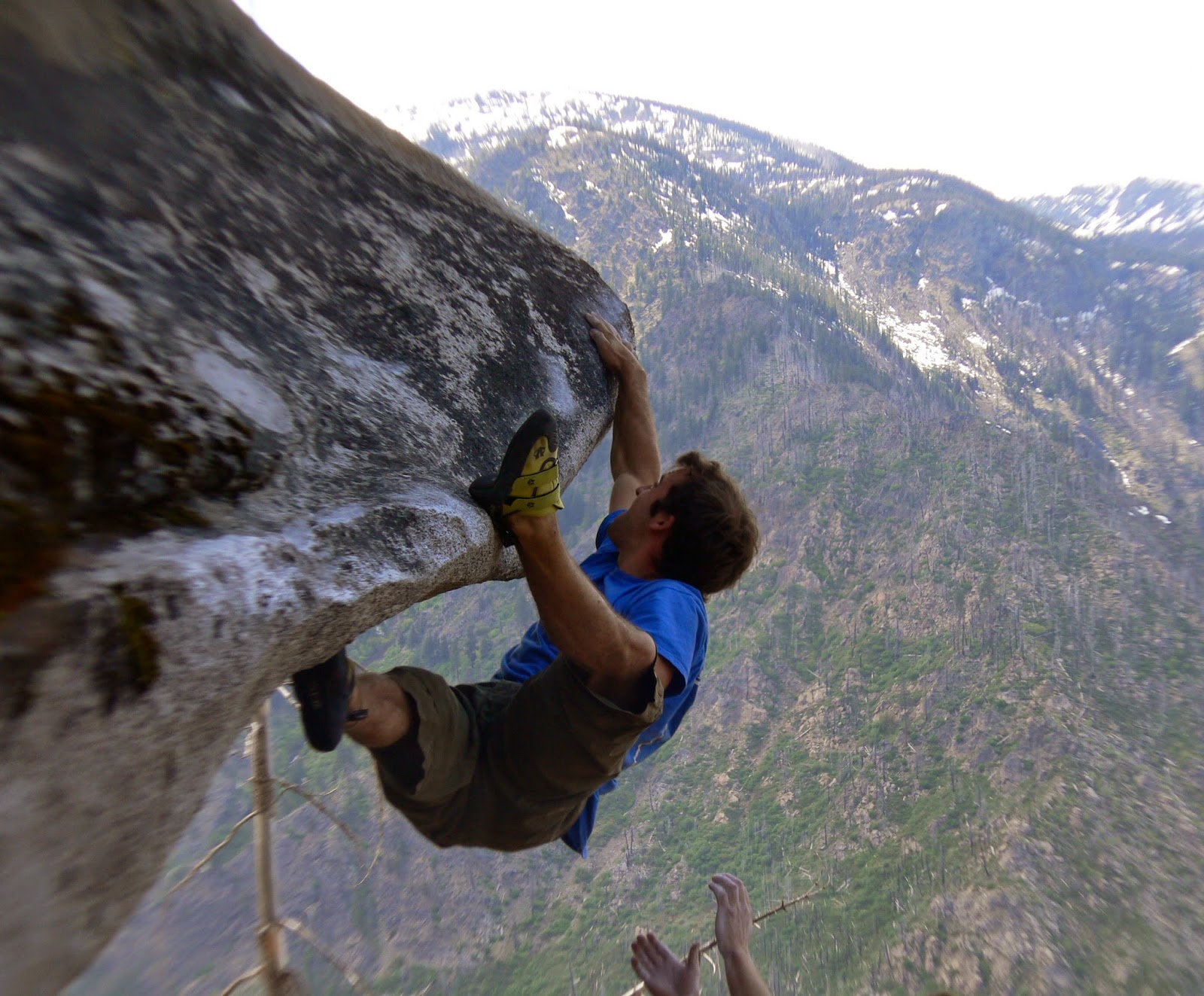Climbing shoes are for me the most
important piece of equipment in climbing. They can make a problem feel 3 grades
easier, and unfortunately if they are the wrong pair, ten times harder.
Changing to a new shoe can be stressful; after all you know what your current
pair can do. However, there are few things more satisfying than discovering
‘your new climbing shoes’ – a pair that not only feel just as good as your
current shoes, but so much better. Dare I say it; they may even help you break
that next grade boundary?
A bit of context is needed here. During my
first 8 years of climbing I experimented with a variety of shoes and brands –
Boreal, 5-10, Sportiva, Scarpa, to name but a few. However, it wasn’t until
2007 that I found a make that truly fitted my feet – Evolv. Suddenly I had a
comfortable, yet tight heel, rather than a baggy one that came off when I
really pulled on heel hooks. The rubber was sticky and they lasted a reasonable
amount of time. My preferred shoe was the Pontas Velcro, in which I climbed my
first font 8a that summer, as well as many of my most memorable climbing
experiences. The picture below is taken on a new route I was attempting in
Leavenworth, Canada in 2008. That is not to say I wasn’t partial to the other
shoes in the Evolv range – I lead my first sport 8a+ in the Pontas lace-up, and
I still have a soft spot for the Talon for steep overhanging walls.
However, last year I ended my five-year
obsession with the Pontas, as I started wearing Evolv Shamans. I was uneasy at
first. This was a far more aggressive shoe than the Pontas, with the ‘love
bump’ and ‘knuckle box’ forcing your toes into a down turned position. However,
I quickly realised that this new design was not just suited to steep walls, but
was also as effective on slabs and technical flat walls. 2013 was probably my
best year on Southern Sandstone based upon the nine first ascents (from font
6a-7b+) that I put up. However, it was also my best year due to the
improvements I made in the technical aspects of my climbing. I have always
found slabs hard, and in the past my footwork has been the subject of many
jokes. But last year I managed to repeat the highly technical ‘Porg’s Progress’
(font 7b) and ‘Continuing Adventures of Porg’ (font 7b+), as well as getting
the second/third ascent (I’m not sure which) of ‘Sansara’, which is given font
7a, despite being more like a highly technical 7b. All of this is partially
down to my change of shoes, as I wore the Shamans pretty much exclusively last
year.
Nevertheless, since the end of last year I
have been anticipating the release of Evolv’s new performance shoe – the Nexxo.
Created with Chris Sharma (my all time climbing hero!), and building upon the
success of the Pontas (it also includes a ‘love bump’ and ‘knuckle box’) I
couldn’t wait for them to arrive in the UK. At last my pair arrived a couple of
months ago, and like a child at Christmas I eagerly unwrapped them - they
looked amazing! New climbing shoes always take a bit of time to bed in – but I
was pleasantly surprised by how quickly these shoes felt just right. I think it
might be due to the elastic top section, but the nearest comparison I can make
is that it felt as if I had a rubber sock on. Everything felt so precise, and
within a week of starting to wear them I don’t think I have worn my Shaman’s
once. However, it is not just how much control I have pushing down that
impressed me, but it’s the rubber on the top of the toe as well. I have
struggled with toe hooks for years (I find it quite painful to make my leg do
that for some reason), but the ample rubber on the top of the toes has made
them a lot easier. Multiple people who have tried this shoe have expressed this
as well. Unfortunately I have not had much opportunity to try them on rock yet
as the weather seems to have turned against us recently, but on the few visits
I did manage to make to sandstone with them they justified being my first
choice shoe – as I sent ‘Quoi Faire’ (font 7b) at Stone Farm, finally being
able to stand up on a particularly nasty sloping foothold.
